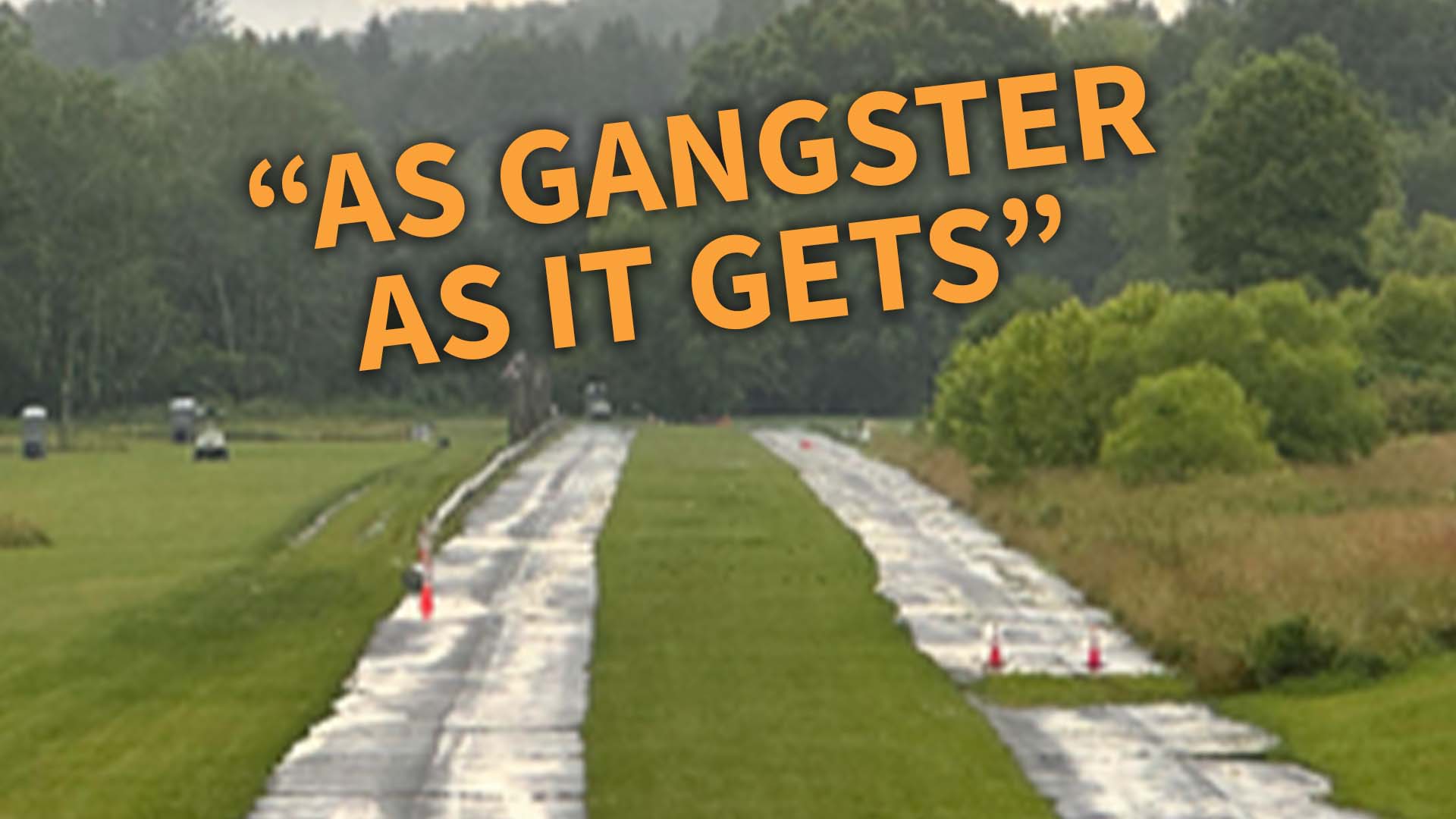

The paved lanes at the top of this page don’t look much like a drag strip. They certainly don’t look like one that drivers would travel to race on, especially with those bumps and all that grass. But Twin River Raceway in rural Virginia has only become more popular since it re-opened to regular action a few years back, and owners of purpose-built, small-tire drag cars tout it as one of the realest tracks still around.
I first heard about Twin River over the Fourth of July weekend. Someone shared a Facebook post about the Cash Days of Virginia event coming up soon, and when I saw the track, I was definitely skeptical. There’s not even a return road. The comment section shows I wasn’t alone, but peppered throughout were photos and videos from drivers who have actually raced there. According to them, this place isn’t just OK—it’s a throwback to old-school strips that separates fast drivers from slow ones with big wallets.
That’s why I reached out to Michael Wheatley, who helps with race day operations and track promotion. He gave me the rundown on Twin River, explaining that it’s taken on several different forms since the 1960s. “It’s been a drag strip, a small airport, had cattle, and then laid dormant for years until this,” Wheatley tells me.


Michael, along with Lee Wheatley, Cody Mann, and owner Forrest Lunsford, has spent the past three years building the facility’s reputation. It started small but quickly gained the support of locals who wanted to see the track succeed. There are roughly 1,575 people in the town of Coeburn, where Twin River is located.
“We got a lot of support from locals on helping us install guardrails, lights, etc. to help make it a safer place like it is today,” Wheatley said. And when I asked if they plan to keep making safety upgrades, he responded, “We’ve talked to people about resurfacing the track, leveling it out, and also getting concrete barriers to put alongside the guardrails and/or take the rails away. We’re also looking at bleachers for more comfortable spectator seating.”



This isn’t a big-budget operation, nor is it meant to be. And while Wheatley is more than familiar with the internet’s concerns about the track, he explained that there’s been just one incident in his time there. “It was after we put up the guardrail. An S197 Mustang’s anti-roll bar broke and he spun out and hit the guardrail in the left lane.”
The driver was fine, and I was able to talk with Chris Cook, who was in the opposite lane when the crash happened. Cook owns a nitrous Fox Body Mustang nicknamed “Jigsaw” that puts down “somewhere in the 750 or 800” horsepower range at the track. He’s a regular at Twin River, hailing from Kentucky and making the trip over at least once a month.
“Y’know, it’s one of the few facilities that every time I’ve ever been there to race, there’s a fully staffed rescue truck and EMS there,” Cook told me. “A lot of places [we race at] don’t even have an ambulance.”

Cook is deeply embedded in the no-prep drag racing scene. As opposed to other styles that go the extra mile to ensure the best conditions possible, rubber is pretty much the only grip compound used in no-prep. This makes the driver’s skill just as crucial as every other component in a successful run.
Cook is exactly the type of enthusiast that Twin River shoots for. After all, the track’s tagline is “It Ain’t Bristol, Baby!” His stick-shift car is far from the fanciest, but it’s surely fast, and that’s what matters most.
“To be honest, it’s got a few bumps in it that other tracks don’t have and it’s a little bit narrower. But I think the grass in between puts an illusion there that it’s narrower than it is,” Cook said. “I swear, I think the lens makes it look like it’s curved but I really don’t think it is.”
“There’s a reason no-prep became a thing,” he continued. “If you have a surface that’s equivalent to an NHRA weekend, there’s no mystery in who’s going to win. It’s about who has the most horsepower and the biggest wallet. Unfortunately, it kind of takes that type of racetrack for regular people to compete. Of all the cars that race at Twin River, I would say that 90% have more power than that surface would take, so you get down to a tuning game.
“When you put it with blacktop from the ’60s, it makes for a lot better racing to me than just seeing who’s got the biggest wallet.”
Now, there’s no question that drag racing at Twin River Raceway has the potential to be dangerous. It’s just that the same can be said for any facility that’s dedicated to high-speed runs. The goal is to create an environment that’s less dangerous for drivers and spectators than street racing, and considering that’s the alternative in rural Virginia, this is undoubtedly the better option.
No one is forcing anybody to race here. Every person who pays the gate fee knows that risk comes with racing, and the same goes for the drivers. It’s their call to make and clearly, some folks think it’s worth it.
“The people that feel like it’s too unsafe for them are probably doing the best thing by not coming,” Cook admits. “It’s not for everyone, but it’s really loved by the people who like it.”
Got a tip or question for the author? Contact them directly: caleb@thedrive.com